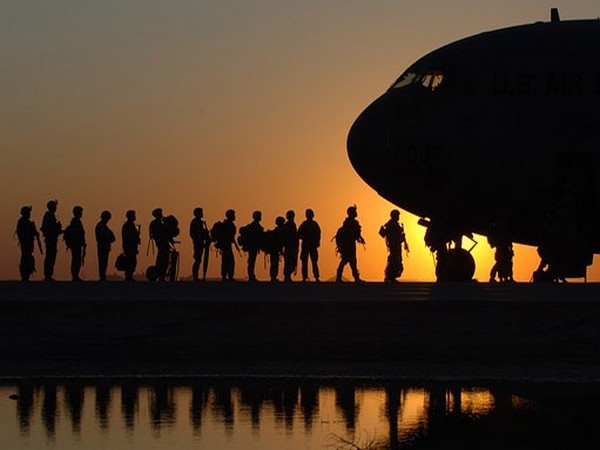Pentagon says US has dropped to 2,500 troops in Afghanistan

- Country:
- United States
The US military has met its goal of reducing the number of troops in Afghanistan to about 2,500 by Friday, a drawdown that appears to violate a last-minute congressional prohibition.
“Today, the United States is closer than ever to ending nearly two decades of war and welcoming in an Afghan-owned, Afghan-led peace process to achieve a political settlement and a permanent and comprehensive ceasefire,” the acting secretary of defense, Christopher Miller, said in a written statement, adding that 2,500 troops is enough to continue countering extremist groups in Afghanistan and training Afghan government forces.
“Continued fulfillment of these two complementary missions seeks to ensure that Afghanistan is never again used to harbor those who seek to bring harm to the United States of America,” Miller said.
President Donald Trump, who ordered the reduction in November, said Thursday that troop levels in Afghanistan had reached a 19-year low, although he did not mention a troop number. Last February his administration struck a deal with the Taliban to reduce American troop levels in phases and to go to zero by May 2021. It is unclear how the incoming Biden administration will proceed.
President-elect Joe Biden, who has advocated keeping a small counterterrorism force in Afghanistan as a way to ensure that extremist groups like al-Qaida are unable to launch attacks on the United States, faces a number of questions on Afghanistan. One is how and whether to proceed with further troop cuts.
Trump in his brief statement alluded to his longstanding desire to get out of Afghanistan entirely.
“I will always be committed to stopping the endless wars,” he said, referring to US wars that have dragged on in Afghanistan since 2001 and in Iraq for much of the period since 2003.
Although senior military officials had cautioned against speedy troop reductions in Afghanistan, Miller announced on Novembe 17 that he was implementing Trump's order. As a result, military commanders scrambled to pull more than 1,500 troops out of the country in the last few weeks. At Trump's order, commanders also cut US troop levels in Iraq to 2,500 from about 3,000 in the same period.
The Afghanistan decision was seen by some as unnecessarily complicating the decision-making of the incoming administration. Trump at the time had refused to acknowledge that he had lost the election and would be ceding to Biden on Jan. 20. Some in Congress, including fellow Republicans, opposed Trump's decision.
Under the National Defense Authorization Act passed by Congress two weeks ago, the Pentagon was explicitly forbidden to use money from this years or last years budget on reducing the number of troops below 4,000 — or below the number that was in the country the day the bill was finalized, which was January 1. Trump vetoed the measure, but both the House and Senate voted to override his veto.
In his statement Friday, Miller made no mention of this statutory prohibition. He said the Pentagon is planning for additional troop reductions to zero by May, adding that “any such future drawdowns remain conditions based.” The Pentagon has not yet fully explained how it squares its continued drawdown with the legal prohibition. In response to questions about this, the Pentagon issued a written statement saying, “DoD will adhere to all statutory provisions of the FY21 National Defense Authorization Act, to include those in Section 1215 that impact the ongoing drawdown in Afghanistan.” It said it has been working with the National Security Council “on the most efficient means to ensure consistency amidst an anterior drawdown already occurring across Afghanistan, and in a manner that continues to ensure the safety of U.S. personnel.” The defence legislation provides two conditions under which the Pentagon could get around the prohibition -- a presidential waiver or a report to Congress assessing the effect of a further drawdown on the US counterterrorism mission in Afghanistan and the risk to US troops there. As of Thursday the Pentagon had met neither of those conditions.
The prohibition on completing the drawdown put the Pentagon in a bind, coming weeks after it had begun the drawdown, which involved a large logistical effort to remove equipment as well as troops. Because of less-than-transparent military procedures for counting troops in Afghanistan, it is possible that the 2,500 figure may be fudged.
The main reason for concern about a too-quick troop withdrawal is what the Pentagon sees as continued high levels of Taliban violence against the Afghan government. Some US officials have questioned the wisdom of fully withdrawing, in accordance with the February 2020 agreement with the Taliban, if violence remains high. The US invasion of Afghanistan in October 2001 was aimed at overthrowing the Taliban regime, running al-Qaida out of the country and laying the groundwork for a global “war on terrorism.” It turned into something more ambitious but less well-defined and became far more costly in blood and treasure. During Biden's time as vice president, the US pushed US troop totals in Afghanistan to 100,000 in a failed bid to compel the Taliban to come to the negotiating table. When Trump took office four years ago there were about 8,500 troops in the country, and he raised it to about 13,000 that summer.
(This story has not been edited by Devdiscourse staff and is auto-generated from a syndicated feed.)
ALSO READ
"Shame to lose Davey for a week or two": Kane Williamson on Miller's injury
If you can''t take Mayank down, just get through his overs: GT''s David Miller
Miller could be available from next game: GT pacer Spencer Johnson
Joe Biden vows 'ironclad' support for Israel's security amid threats from Iran
Tax Day reveals a major split in how Joe Biden and Donald Trump would govern










